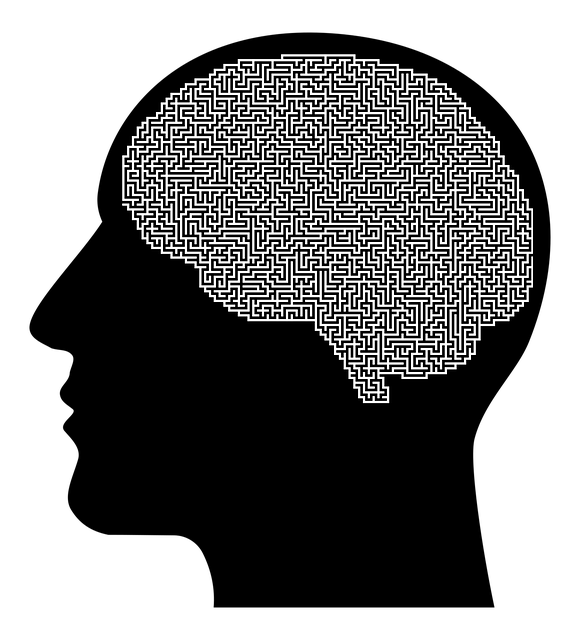Golden Chronic Pain Therapy (GCPT) prioritizes patient safety through comprehensive risk assessment, integrating mental health education, mindfulness meditation, and self-awareness exercises. This holistic approach balances benefits and risks, empowering patients to actively manage pain by enhancing self-awareness, reducing anxiety, and developing effective coping mechanisms. GCPT combines physical wellness with emotional healing, utilizing communication strategies from the Mental Wellness Podcast Series Production for tailored, sustainable results, revolutionizing pain management.
“In the realm of chronic pain management, understanding and mitigating risks are paramount to ensure patient safety and optimal outcomes. This article delves into the intricacies of risk assessment within Golden Chronic Pain Therapy, shedding light on potential dangers and side effects. We explore implementing comprehensive harm minimization strategies and emphasize the golden rule: balancing benefits with precautions for safe, effective treatment. By navigating these considerations, healthcare professionals can revolutionize care, fostering a symphony of improved patient outcomes.”
- Understanding Risk Assessment in Chronic Pain Therapy: Identifying Potential Dangers and Side Effects
- Implementing Harm Minimization Strategies: A Comprehensive Approach to Patient Safety
- The Golden Rule of Risk Management: Balancing Benefits with Precautions for Optimal Patient Outcomes
Understanding Risk Assessment in Chronic Pain Therapy: Identifying Potential Dangers and Side Effects

Risk assessment is a cornerstone of chronic pain therapy, crucial for identifying and mitigating potential dangers and side effects associated with various treatment approaches. In Golden Chronic Pain Therapy, understanding this process involves recognizing that every intervention carries inherent risks alongside its benefits. Healthcare providers must thoroughly evaluate these factors to ensure patient safety and well-being. By carefully considering the unique needs and circumstances of each individual, therapists can design a tailored plan for harm minimization.
This process includes scrutinizing physical, psychological, and social aspects, as chronic pain often intertwines with emotional regulation and mental health. Incorporating strategies like positive thinking and mindfulness techniques within comprehensive treatment plans can enhance overall patient outcomes. Moreover, Mental Health Education Programs Design play a pivotal role in empowering individuals to actively participate in managing their pain and making informed decisions regarding their care.
Implementing Harm Minimization Strategies: A Comprehensive Approach to Patient Safety

Implementing harm minimization strategies is a crucial aspect of patient safety, especially in managing chronic pain conditions. A comprehensive approach involves integrating various techniques to ensure the well-being and comfort of patients receiving Golden Chronic Pain Therapy (GCPT). Mindfulness Meditation has emerged as a powerful tool to enhance self-awareness and reduce anxiety, which can significantly impact pain management. By incorporating regular meditation practices into a patient’s Self-Care Routine Development for Better Mental Health, healthcare providers can empower individuals to actively participate in their treatment.
Self-Awareness Exercises play a pivotal role in this process by encouraging patients to identify triggers, understand their emotional responses, and develop coping mechanisms. Through these strategies, patients gain the ability to navigate their pain journey with increased resilience. This holistic approach not only minimizes harm but also fosters a sense of empowerment, enabling individuals to manage their chronic pain effectively while prioritizing their overall mental health.
The Golden Rule of Risk Management: Balancing Benefits with Precautions for Optimal Patient Outcomes

In the realm of Golden Chronic Pain Therapy, the fundamental principle guiding risk assessment and harm minimization is the balancing act between reaping the benefits and implementing necessary precautions. This meticulous approach, often encapsulated in the Golden Rule of Risk Management, aims to optimize patient outcomes by ensuring every intervention is carefully weighed against potential risks. Here, the focus shifts from mere treatment to holistic care that considers both physical and mental wellness.
By integrating insights from the Mental Wellness Podcast Series Production and employing effective communication strategies, healthcare providers can facilitate emotional healing processes. This dual approach—treating chronic pain while nurturing mental health—is key to achieving sustainable patient outcomes. Through such balanced practices, the Golden Rule not only guides but also revolutionizes care delivery, ensuring patients receive the best possible treatment tailored to their unique needs.
In conclusion, effective risk assessment and harm minimization planning are paramount in Golden Chronic Pain Therapy. By thoroughly identifying potential dangers and side effects, implementing comprehensive harm reduction strategies, and balancing benefits with precautions, healthcare providers can ensure optimal patient outcomes. This holistic approach not only minimizes risks but also enhances the overall quality of care for chronic pain sufferers.














